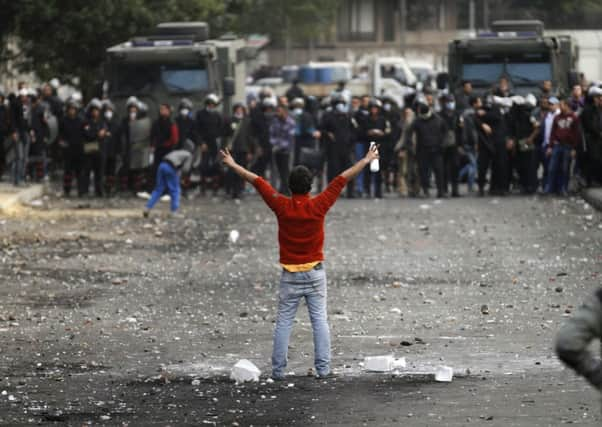Andrew Hammond: Volatility still the main text


Today, 17 December, marks the third anniversary of the self-immolation of Mohamed Bouazizi in Tunisia. Within a month, protests led to the unseating of the country’s long-standing president, and also helped spur wider political change across North Africa and the Middle East.
Three years on, much optimism about what has become widely known as the “Arab Spring” has turned into scepticism and uncertainty. Yet, in the context of this concern and unpredictability, it is clear that significant political volatility will likely continue in the region, and indeed across much of the rest of the world, into 2014.
Advertisement
Hide AdAdvertisement
Hide AdFor, as well as North Africa and the Middle East, there has been major political instability, internationally, in recent years. In the European Union, for instance, millions have taken to the streets and administrations in more than half of the 27 member states fell or were voted out of office from Spring 2010 to 2012 alone. Within the core Eurozone, 11 of 14 governments collapsed or were turfed out during that same two years.
Most eye-catching, however, have been the political revolutions and popular uprisings in emerging economies. This spans the present protests in Ukraine (the most significant since the 2004 “Orange Revolution”); June’s demonstrations in Brazil (the largest in the country for two decades); through to the remarkable developments in North Africa and the Middle East, including the civil war in Syria; revolutionary changes of power in Egypt, Tunisia, and Libya; transfer of power in Yemen; plus demonstrations and uprisings in Turkey, Iran, Algeria, Bahrain, Jordan, Morocco and Oman.
Despite the diverse nature of this political instability, from Rio and Athens to Cairo, it has reportedly been described as “a revolutionary wave, like 1848,” by Sir Nigel Inkster, former director of operations for the UK Secret Intelligence Service. Others have compared the situation to 1914, 1968 and 1989.
Whatever the validity of these historical analogies, it is clear that the current “wave” of volatility has been driven by a broad range of economic, political, social and technological factors that has played out in contrasting ways across the world. In the European Union, for instance, the role of economic downturn and austerity since the 2008 financial crisis has been key, especially in those states most impacted by the Eurozone crisis like Greece and Spain.
Unrest, however, has also tapped into pre-existing disquiet with established European political parties and systems. In the Middle East, by contrast, protest has often stemmed primarily from deep-seated political and socio-economic discontent that has existed for many years.
Post-2008, however, factors including liquidity crunches, increased food prices, and unemployment spikes, have exacerbated these longer-standing grievances.
A key question is whether international political instability will tail off in coming years, especially if economic recovery takes hold in much of the world. While this is possible, protest and uprising is likely to continue for at least two sets of reasons.
Firstly, there are some factors completely unrelated to the post-2008 financial crisis that will endure, if not intensify. This includes the disruptive role of social media.
Advertisement
Hide AdAdvertisement
Hide AdThere remains debate about how instrumental social media has been in fomenting political instability in recent years, not least in the Middle East and North Africa. However, whether one sees this new technology as an essential component that translated discontent into concrete action, or accentuated what was already-inevitable, indisputably it has played an enabling role that will likely only grow.
Secondly, even if the worst of the 2008 financial crisis has now passed, its consequences endure, especially for the increased number of young people who are unemployed. This puts many at risk of long-term damage to their earnings potential and job prospects, fuelling discontent.
In the EU, a record 24.4 per cent of people under 25 are unable to find work. This has given rise to concern, including from German Chancellor Angela Merkel about a “lost generation”, especially in countries like Greece and Spain where youth unemployment is almost 60 per cent.
As in Europe, youth unemployment in numerous Middle Eastern and North African countries is above 50 per cent, and it is estimated that the region’s average rate could breach 30 per cent within five years. In the Middle East, the problem is acute because it has the world’s biggest youth bulge comprised of increasingly educated people.
Taken as a whole, it is premature to claim, as some have done, that we have entered a new era of global revolution that is here to stay. Indeed, overall political instability may decline if the world economy enters a sustained recovery.
However, there remains significant prospect of political volatility. While circumstances will vary from country to country, instability will potentially be fuelled not just by legacy of the financial crisis such as higher youth unemployment, but also longer-standing political and socio-economic discontent to which social media is giving new impetus.
• Andrew Hammond was formerly a geopolitical analyst at Oxford Analytica, and a special adviser in the UK government of Tony Blair